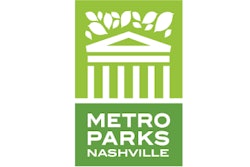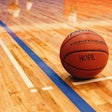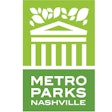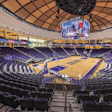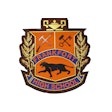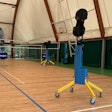The climbing industry is working toward standards and certifications for indoor climbing walls and instructors. These can help your facility run a safer, more successful, climbing wall program.
Climbing sports and the climbing industry have changed tremendously in the last 20 years. When indoor climbing gyms first emerged on the scene in the mid-1980s, they were largely places for experienced climbers to train in the off-season to maintain strength or practice climbing technique. But, at some point, climbing became more popular with the general public.
Indoor climbing venues made climbing sports accessible in ways not previously possible. Climbing gyms introduced the sport to people who never have or may never climb outdoors. According to the Outdoor Industry Foundation's 2005 Outdoor Recreation Participation Study, the number of visits to indoor climbing facilities exceeded outings for climbing outdoors.
Today, indoor climbing is a sport in its own right, with nationally and internationally sanctioned climbing competitions, climbing teams, climbing coaches and professional route setters. Many things have changed in the climbing business since the beginning, like structure design, equipment engineering and techniques used to climb on vertical terrain. But, one change is more important than all of the others, especially to fitness centers: the changing demographics of climbers and climbing instructors. New types of climbers are emerging, and bringing with them new approaches to management and instruction.
New climber challenges
As the sport of climbing has grown, diversified and attracted new clientele, it has had to address the challenges posed by a new, wider audience. The clientele has changed fundamentally. The old-timers are still around, but more people are using climbing as a path to fitness, and are not necessarily interested in traditional climbing pursuits like mountaineering. Climbing facilities are no longer the exclusive preserve of "climbers"; in fact, most climbing structures are now being built in multi-purpose recreational settings such as colleges, universities and commercial fitness centers.A main concern for these types of facilities is how to prepare and train your staff to teach essential climbing and belaying skills. Also of concern is how to prepare clients to move over vertical terrain safely. Two solutions present themselves: certification of climbing wall instructors and standardization of climbing facility operations. In fact, these strategies mirror those the fitness industry is discussing as a whole.
The last year saw major developments on both fronts with the development and delivery of a pilot Climbing Wall Instructor Certification Program, developed jointly by the Climbing Wall Association (CWA) and the American Mountain Guides Association (AMGA). In addition, there was a major revision of the Industry Practices: A Sourcebook for the Operation of Manufactured Climbing Walls, now in its third edition.
Instructor certifications
Certification programs are not new to the climbing world. Most developed countries with mountaineering traditions, including the United States, have certification programs. Most national and international certification efforts involve defining sets of prerequisites, experience, training and competencies that candidates must fulfill or demonstrate prior to receiving a certification. Most certification efforts also require ongoing professional education and training.Most often, the curricula, certification standards and training processes are overseen and maintained by an independent agency or organization to ensure quality and to sanction the credentialing process. The climbing community has successfully offered certifications in many disciplines, including alpine climbing, rock climbing and ski mountaineering. The indoor climbing community has successfully provided quality training programs for climbing gym clients since the beginning. However, until now, there has not been a recognized certification path for indoor climbing instructors.
Last winter, a group of people with the CWA and AMGA began development of a certification program and curriculum for indoor climbing instructors. It investigated certification programs in Canada and Europe, assessed their strengths and weaknesses, and developed a program appropriate for the U.S. market. The first climbing wall instructor certification course was offered in Boulder, Colo., in April 2007 at the Boulder Rock Club, and was taught by John Bicknell, AMGA president and certified rock guide. Offered as part of the 2007 Climbing Wall Summit, the course sold out and was considered a huge success.
The joint certification program sponsored by the CWA and the AMGA is a two-step program. The first step is the Climbing Wall Instructor Certification itself, a 20-hour course of training and evaluation. The second step is a Climbing Wall Instructor Trainer Certification, which will be provided for the first time at the Climbing Wall Summit in May 2008 in Boulder. The collaboration between the two organizations will allow for a continuous, uninterrupted professional development path from climbing instructor to certified guide.
The Climbing Wall Instructor Certification Program has a few relatively straightforward goals: to increase professionalism, improve the quality of instruction, and define and develop a more consistent standard of care for climbing instructors throughout the U.S. The course focuses primarily, although not exclusively, on the essential technical skills needed to provide competent climbing instruction indoors. Course topics include client orientation to climbing, teaching climbing movement skills, teaching proper belaying techniques for top rope and lead climbing, teaching lead climbing, proper equipment care and use, proper facility use, care and inspection, and discussion of pragmatic risk-management strategies.
The program has been carefully designed so that aspiring instructors with appropriate prior experience and training can complete the course and evaluation over a long weekend. More than 30 candidates have been trained and evaluated, with a pass rate of 87 percent, to date. The program is intended for current climbers and instructors who teach or wish to teach novices in an indoor setting.
About the Climbing Wall Association (CWA)The CWA is a 501(c)(06) non-profit industry trade association incorporated in the State of Utah in May of 2003. Governed by a board of directors, managed by an executive director and guided by a strategic plan, the CWA is the only trade association addressing the specific needs and interests of the climbing wall industry and climbing wall operators. The mission of the CWA is to support the development of the climbing wall industry, to promote the sport of climbing and to advocate for the interests of its members.The association serves manufacturers of climbing wall equipment, builders of climbing walls, operators of climbing walls and others involved in the climbing wall industry. It provides benefits to members who hold a membership with the organization which is renewed annually. Benefits of membership include the typical benefits of trade association membership, including access to a number of insurance risk purchasing groups including general liability insurance and workers compensation programs. The CWA is the standard-setting organization for the manufactured climbing wall industry, and develops and maintains standards for the design and engineering of climbing walls and the operation of climbing wall facilities. It also offers training and professional development for the staff of climbing gyms, risk-management consulting for member organizations, an annual conference and other services. Today, the CWA serves more than 250 member companies employing thousands of industry professionals, some of whom serve as CWA volunteers. Please consider supporting the association in its work by joining the CWA. More information can be obtained at the CWA website at www.climbingwallindustry.org. |
||
Facility operations and emerging standards
The climbing industry, like most maturing industries, has begun to develop accessible and widely applicable consensus standards. The standards document Industry Practices, which assist in defining, organizing, understanding and implementing a set of management, operational, training and climbing practices.There are some key areas of common practice emerging in the climbing industry, primarily practices surrounding client orientation, training and assessment prior to use of the facility or the wall.
Climbing is a serious sport that should involve a thoughtful introduction and discussion of the risks and hazards associated with participation. It is imperative to disclose and discuss with clients the nature of climbing sports, the risks and hazards associated with climbing, the requirements for participation (including taking personal responsibility for one's safety), and the possible consequences for not meeting the requirements and expectations demanded by the sport. Discussion about and completion of a participation and/or exculpatory agreement is now considered an essential step in the intake process.
The standard practices that have emerged in the climbing industry during the intake process include assessing the client's prior climbing experience, determining the client's level of climbing ability and observing the client's proficiency in technical climbing skills - principally, managing a belay system to safeguard a climber on vertical terrain. As you can imagine, this represents a significant amount of involvement with the new customer, initially, including direct observation, assessment of skills and documentation of the results. But the time spent and careful attention paid to the customer in this orientation process reaps benefits downstream for years. In some cases, an efficiently run, high-quality orientation and training process is the difference between a well-used, successful climbing wall and a wall that is under-used or one that experiences accidents.
Fortunately, the technical skills needed to climb indoors on a top-rope anchor can be taught, although not necessarily mastered, in a relatively short period of time. A reasonably thorough introductory belay class can be taught in a couple of hours.
Regardless of previous climbing experience, it has become customary that every new client is routinely assessed by taking and passing a belay test before being granted unlimited access to the climbing wall. The tests are usually given sequentially: first, a top-rope climbing and belaying test (where the climber is suspended from an anchor overhead at all times), and then a lead climbing and belaying test, which is considered a more advanced set of skills for an experienced climber/belayer team. The belay test assesses all of the skills necessary to perform a proper belay. The test also assesses the proper care and use of each piece of climbing equipment in the safety chain according to the equipment manufacturer's instructions: the rope, harness, carabiners and belay devices. In addition, the test assesses the proper construction or set up of the belay system using all of the constituent parts, including attaching oneself to the system (typically by tying in with an appropriate knot).
The standard test in a facility should also assesses appropriate behavior on the part of the climber and belayer. Are they performing proper checks and double checks on the equipment and system? Are they communicating with one another properly? Is each team member ready before the climber starts climbing? Can the belayer catch a fall and lower the climber safely to the ground?
An experienced instructor is looking for essential criteria in evaluating the quality of the belay and the belayer's skills. For example, was the belay device configured and used properly according to the manufacturers instructions? Did the belayer demonstrate the ability to feed rope through the device properly and smoothly? Did the belayer maintain the ability to brake a fall at all times? And, did the belayer demonstrate an appropriate behavioral reaction to the fall? A competent belayer must reflexively react to break a fall, even if surprised, stressed or fearful.
As you can imagine, belay school is a pass/fail course, and getting a climbing team to this level of proficiency and confidence can take some time. However, an expert instructor can manage this process with a reasonably fit and capable novice within three or four visits to the facility.




















